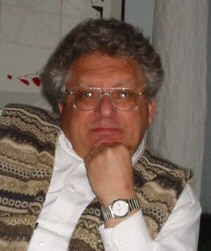Finding Reasons for What We Do in ESL Classrooms
Central Missouri State's Bob Yates defends SLA's role
Bob Yates, an associate professor of English/TESL at Central
Missouri State University, responds to Charles Nelson's ESL MiniConference
article as well as related posts on the TESL-L listserv.
In a post on TESL-L on March 31, 2002 Charles Nelson, after acknowledging that SLA researchers are cautious about the claims they make, noted:
Such claims can not only apply to almost anything people do but seem to be speaking only of anomalies in learning a language rather than any discernible pattern of learning.
TESL-L is not the place to engage in specific theoretical claims, but let me suggest here one important principle from a modern theory of language which every second language teacher needs to think about. I am referring to the notion of "learnability." For a paper with real pedagogical implications I recommend White (1987) "Against comprehensible input."
White argues that, depending on the properties of the L1 in relation to the L2, positive evidence will not be sufficient for the learners to acquire particular rules of the L2. She speculates that this might be the case for adverb placement for learners of English whose first language is French. Trahey and White (1993) shows that negative evidence (in other words, explicit correction) was necessary for French learners to realize English was more restrictive with regard to adverb placement.
According to his Web page, Charles Nelson teaches writing. I wonder what his principles of correction are. Any principle he articulates is based on a theory of both language and second language acquisition. Of course, it is possible he does not correct anything in his students' papers. That, of course, is a position, based on theory, that some in our field make.
Let me suggest that EVERYTHING a second language teacher does in the classroom is based on some kind of theory of language and how language is learned. All else being equal, a teacher who can articulate the reasons for his/her choices is a better teacher than one who can not. Because I believe the previous sentence is true, theory about the nature of language and language acquisition is central to what we do as second language teachers.
References
Comment by Bob Yates, Assoc. Professor, English & TESL, Central Missouri State University
2002 ESL MiniConference Online
 I believe the importance of theory in the field of second language teaching is under assault. Frankly, I can not understand why. For the most recent published example, see the paper by Karen Johnson (2002) in the March/April/ May issue of TESOL Matters. It is very disturbing that Johnson's paper has next to nothing to say about knowledge of language and language acquisition in second language teacher education. Charles Nelson's recent postings on TESL-L and repeated on seem to me along the same lines.
I believe the importance of theory in the field of second language teaching is under assault. Frankly, I can not understand why. For the most recent published example, see the paper by Karen Johnson (2002) in the March/April/ May issue of TESOL Matters. It is very disturbing that Johnson's paper has next to nothing to say about knowledge of language and language acquisition in second language teacher education. Charles Nelson's recent postings on TESL-L and repeated on seem to me along the same lines.
Johnson, K. (2002). Second language teacher education. TESOL Matters, 12(2), pp 1, 8.
Trahey, M. and White, L. (1993). Positive evidence and preemption in the second language classroom. Studies in Second Language Acquisition, 15, 181-204.
White, L. (1987) Against comprehensible input: the Input Hypothesis and the development of L2 competence. Applied Linguistics 8: 95-110